Find Help
More Items From Ergsy search
-

Part One: Understanding Osteoarthritis- MSK Physiotherapy
Relevance: 100%
-
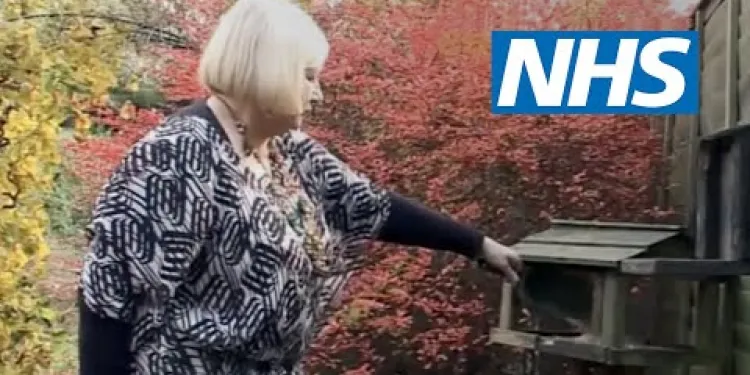
Osteoarthritis: Elaine's story | NHS
Relevance: 53%
-

Osteoarthritis of the Hip
Relevance: 51%
-

Osteoarthritis: Elaine's story | NHS
Relevance: 46%
-

Osteoarthritis of the Hip
Relevance: 46%
-
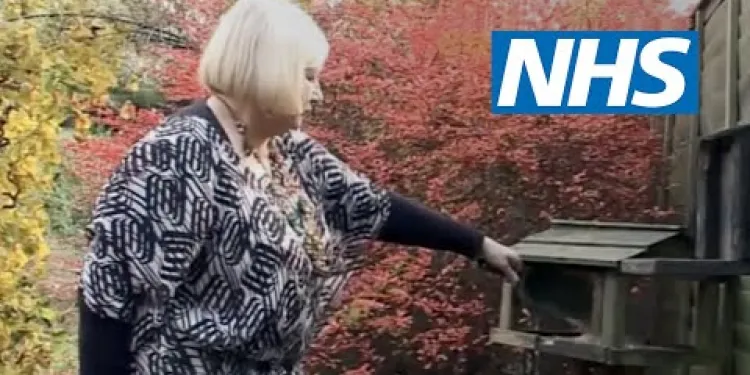
Osteoarthritis: Elaine's story | NHS
Relevance: 42%
-
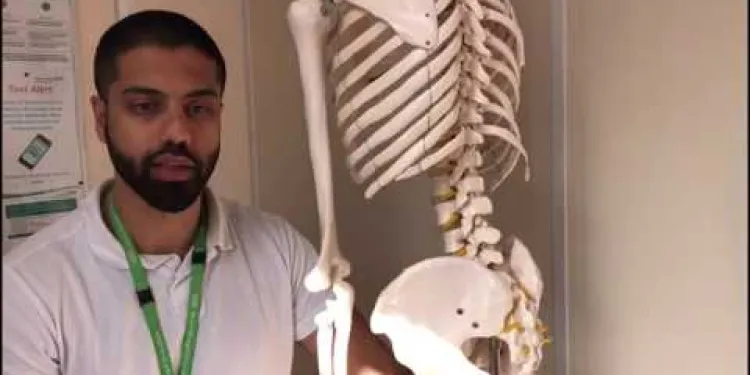
MSK Lower Back Pain information video
Relevance: 39%
-

What is air physiotherapy?
Relevance: 34%
-

Is a prescription needed for air physiotherapy?
Relevance: 34%
-

Does air physiotherapy involve medication?
Relevance: 32%
-

How does air physiotherapy work?
Relevance: 32%
-

Are there any exercises involved in air physiotherapy?
Relevance: 32%
-

Can air physiotherapy be done at home?
Relevance: 32%
-

Who can benefit from air physiotherapy?
Relevance: 31%
-
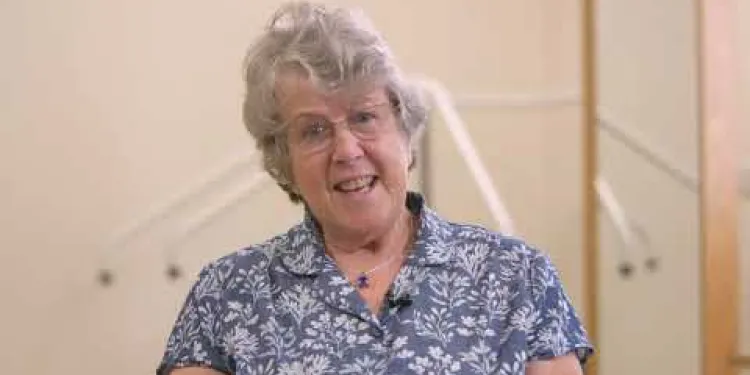
NHSGGC - Respiratory Physiotherapy Service: Self-Management
Relevance: 31%
-

What equipment is used in air physiotherapy?
Relevance: 31%
-
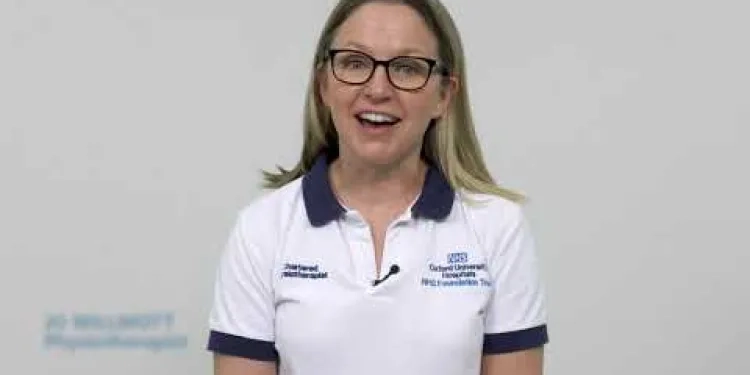
Incontinence and Prolapse - Physiotherapy Advice
Relevance: 31%
-

Can air physiotherapy prevent respiratory infections?
Relevance: 31%
-
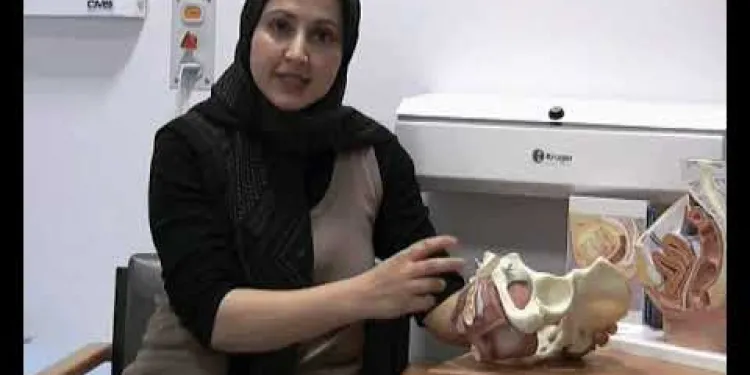
Physiotherapy Assessment of Urinary Incontinence
Relevance: 31%
-
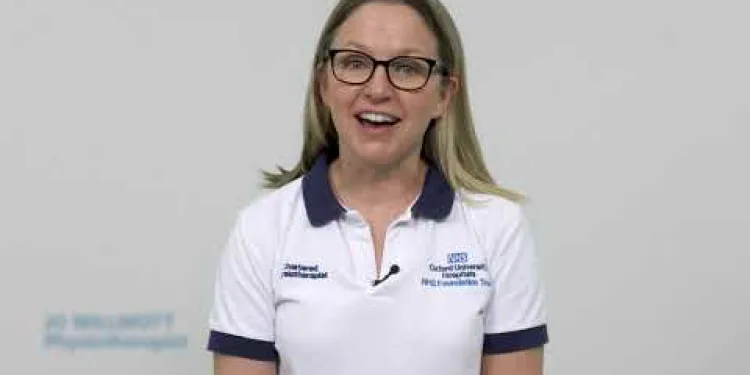
Incontinence and Prolapse - Physiotherapy Advice
Relevance: 30%
-
Can air physiotherapy help with COVID-19 recovery?
Relevance: 30%
-

How often should one perform air physiotherapy?
Relevance: 30%
-
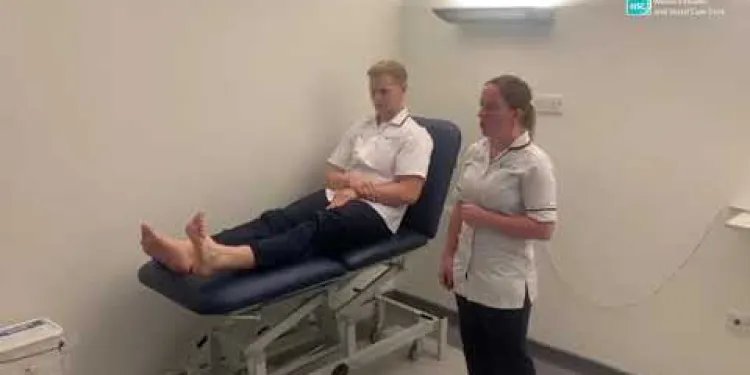
Physiotherapy Exercises following an Ankle Fracture
Relevance: 30%
-

What qualifications should a provider of air physiotherapy have?
Relevance: 29%
-

The Leeds Specialist Rehabilitation Centre - 3 Prosthetic Physiotherapy
Relevance: 29%
-

What is an incentive spirometer in air physiotherapy?
Relevance: 23%
-
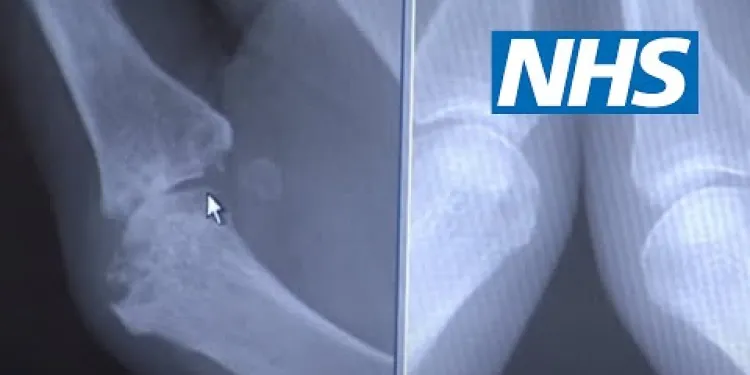
Rheumatoid arthritis | NHS
Relevance: 22%
-

Is air physiotherapy different from traditional physiotherapy?
Relevance: 19%
-

How does PEP therapy work in air physiotherapy?
Relevance: 17%
-
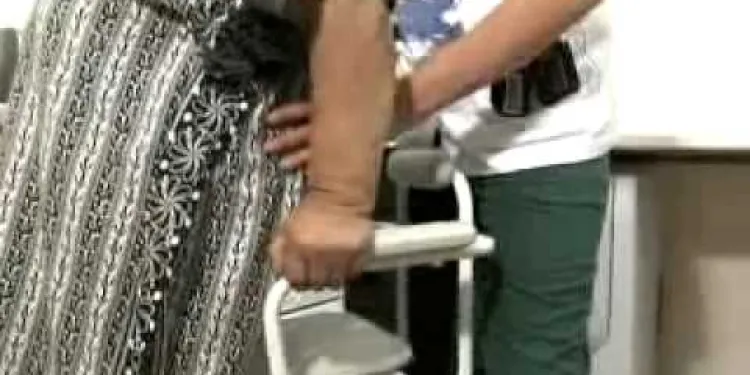
Total knee replacement
Relevance: 15%
-

Are there any risks associated with air physiotherapy?
Relevance: 15%
-

A journey to hip surgery
Relevance: 14%
-

How long does an air physiotherapy session last?
Relevance: 13%
-

Total Hip Replacement
Relevance: 12%
-
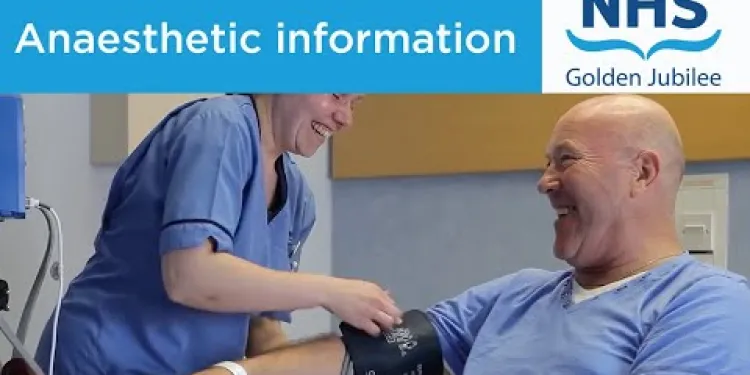
Knee replacement
Relevance: 12%
-
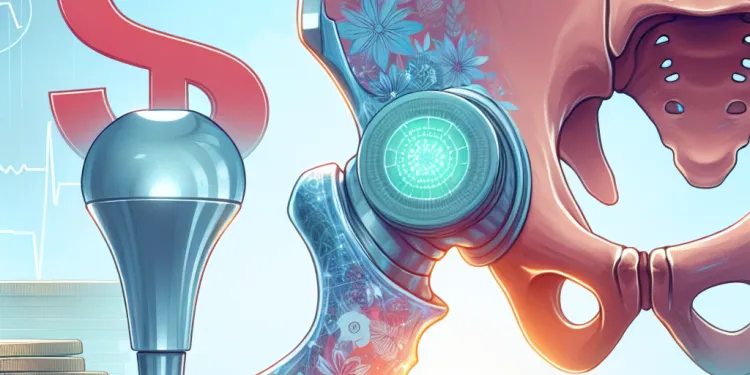
Do I need a Hip Replacement?
Relevance: 12%
-
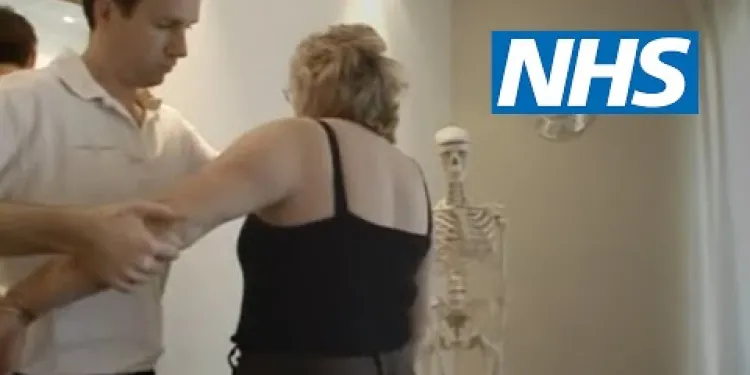
Shoulder pain | NHS
Relevance: 12%
-

Frozen Shoulder Assisted Abduction
Relevance: 12%
-
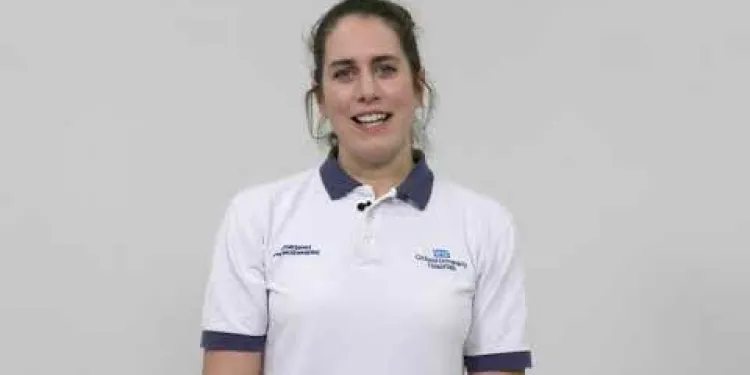
Pelvic Girdle Pain Advice Class
Relevance: 11%
-

Advice on sports injuries
Relevance: 11%
Understanding Osteoarthritis: MSK Physiotherapy
What is Osteoarthritis?
Osteoarthritis (OA) is a common form of arthritis that primarily affects the joints, causing pain, stiffness, and reduced mobility. It occurs when the protective cartilage that cushions the ends of your bones wears down over time. This degenerative joint disease can affect any joint, but it most commonly impacts the knees, hips, hands, and spine.
Causes and Risk Factors
The exact cause of osteoarthritis remains unclear, but multiple factors contribute to its onset. Age is a significant risk factor, as the likelihood of developing OA increases as one ages. Joint injuries, obesity, genetics, gender (with women being more prone), and repetitive stress on the joints due to occupation or sports are also known contributors.
Symptoms of Osteoarthritis
The symptoms of osteoarthritis can vary in severity and tend to slowly evolve. Common symptoms include joint pain, tenderness, stiffness (particularly in the morning or after periods of inactivity), loss of flexibility, grating sensation, and sometimes the formation of bone spurs. It’s important to note that symptoms can worsen over time.
Role of MSK Physiotherapy
Musculoskeletal (MSK) physiotherapy plays a crucial role in managing osteoarthritis. Physiotherapists are trained to develop individualized treatment plans that can help alleviate pain, improve joint function, and enhance quality of life. These plans often include exercises to strengthen muscles around the joints, improve flexibility, and restore normal movement patterns.
Exercise and Lifestyle Modifications
Engaging in regular physical activity is fundamental in managing osteoarthritis effectively. Low-impact exercises such as swimming, cycling, and walking can provide relief. Additionally, maintaining a healthy weight reduces the stress on weight-bearing joints. Physiotherapists can offer advice on joint protection techniques and ergonomic adjustments to help ease daily activities.
Conclusion
Osteoarthritis is a chronic condition that can have a substantial impact on daily life, but with appropriate management through MSK physiotherapy, patients can lead a functional and fulfilling life. Early intervention and personalized physiotherapy plans are crucial in slowing the progression of OA and maintaining joint health.
Part One: Understanding Osteoarthritis - MSK Physiotherapy
Introduction to Osteoarthritis
Osteoarthritis (OA) is a prevalent musculoskeletal condition primarily affecting the joints. It is often characterized by the degeneration of joint cartilage and the underlying bone, leading to pain, stiffness, and decreased mobility. It is more common in older adults but can affect younger individuals as well. In the UK, millions suffer from its effects, impacting their daily activities and quality of life.
Causes and Risk Factors
The exact cause of osteoarthritis is not known, but several risk factors are recognized including age, being overweight, joint injuries, genetics, and overuse of joints. These factors increase the stress on the joints, accelerating cartilage degeneration. Additionally, women tend to be more affected than men, particularly after menopause due to hormonal changes.
Symptoms and Diagnosis
Common symptoms of osteoarthritis include joint pain, stiffness (especially after resting), swelling, and limited range of motion. Diagnosis generally involves a combination of the patient's clinical history, physical examination, and imaging tests such as X-rays. These tests help rule out other forms of arthritis and assess the extent of joint damage.
The Role of MSK Physiotherapy
Musculoskeletal (MSK) physiotherapy plays a crucial role in managing osteoarthritis. Physiotherapists provide tailored exercise programs to improve strength and flexibility, reduce pain, and enhance mobility. Education on joint protection techniques and lifestyle modifications are integral components to prevent further degeneration and maintain a good quality of life. Therapists may also utilise manual therapy techniques and advise on the safe and effective use of assistive devices.
Living with Osteoarthritis in the UK
Managing osteoarthritis requires a multidisciplinary approach. Access to NHS services, community support groups, and professional guidance from MSK physiotherapists can significantly improve outcomes. Additionally, lifestyle interventions, such as weight management and physical activity promotion, are essential for those living with osteoarthritis in the UK. Despite the challenges posed by the condition, with proper management, individuals can lead active and fulfilling lives.
This HTML content is structured to provide a comprehensive overview of osteoarthritis with a focus on its understanding and management through MSK physiotherapy, specifically for readers in the United Kingdom.Understanding Osteoarthritis: MSK Physiotherapy
What is Osteoarthritis?
Osteoarthritis, or OA, is when the joints hurt and are hard to move. This happens because the cushion between bones gets worn out. It often affects the knees, hips, hands, and back. People feel pain and stiffness.
Causes and Risk Factors
We are not sure exactly what causes osteoarthritis, but some things can make it more likely. Being older is a big reason. Getting hurt, being overweight, and sometimes it runs in families. Women get it more often. Doing the same movement over and over, like in some jobs or sports, can also lead to OA.
Symptoms of Osteoarthritis
The signs of osteoarthritis can change and get worse slowly. People with OA feel pain in their joints, especially in the morning or after not moving. Joints might be stiff and hard to move. Some feel a crunching feeling. Sometimes little bone lumps appear. It's important to know symptoms can get worse.
Role of MSK Physiotherapy
MSK physiotherapy helps people with osteoarthritis feel better. Physiotherapists make special plans for each person to ease pain and move better. They suggest exercises to make muscles strong and joints flexible. This helps people enjoy a better life.
Exercise and Lifestyle Modifications
Exercise helps manage osteoarthritis. Doing gentle activities like swimming, biking, or walking is good. Keeping a healthy weight takes stress off the joints. Physiotherapists can teach ways to move safely and make changes to help with daily tasks.
Conclusion
Osteoarthritis can make life hard, but MSK physiotherapy can help. With the right help, people can still do many things they enjoy. Starting early with a good plan is important to keep joints healthy.
Part One: Understanding Osteoarthritis - MSK Physiotherapy
Introduction to Osteoarthritis
Osteoarthritis (OA) is a common problem that affects the joints in your body. It happens when the cushiony cartilage in the joints wears down, leading to pain and stiffness. This can make moving around difficult. OA is more common in older people but can happen to younger ones too. In the UK, many people have OA, which affects how they do everyday activities and their quality of life.
Causes and Risk Factors
No one knows exactly what causes osteoarthritis, but some things can make it more likely. These include getting older, being overweight, hurting a joint, having family members with OA, and using a joint a lot. These things put extra pressure on the joints and wear them out faster. Also, women, especially after menopause, can have more OA because of changes in hormones.
Symptoms and Diagnosis
If you have osteoarthritis, you might feel pain and stiffness in your joints, especially after resting. Sometimes joints can swell and might not move as much as they used to. To find out if you have OA, doctors will ask about how you feel, check your body, and might take pictures of your joints with X-rays. This helps them make sure it’s OA and not something else.
The Role of MSK Physiotherapy
MSK (which stands for Musculoskeletal) physiotherapy is very important to help people with OA. Physiotherapists teach exercises to make muscles stronger and joints more flexible. This can help reduce pain and help you move better. They also teach ways to protect your joints and how to change your lifestyle to keep you healthy. Sometimes they use their hands to help move the joints and might suggest tools to help you move safely.
Living with Osteoarthritis in the UK
Managing osteoarthritis means getting help from different people and services. In the UK, you can get help from the NHS, support groups, and MSK physiotherapists. It helps to keep a healthy weight and stay active. Even though OA can be tough, with good care, people can still enjoy active and happy lives.
This information is here to help you understand osteoarthritis and how MSK physiotherapy can help manage it, especially if you live in the UK.
Frequently Asked Questions
What is osteoarthritis?
Osteoarthritis is a common condition that affects the joints, causing pain and stiffness. It is the result of wear and tear of the cartilage that cushions the joints, usually affecting people as they get older.
What are the symptoms of osteoarthritis?
The symptoms include joint pain and stiffness, swelling, a grating or grinding sensation, and reduced range of motion in the affected joint.
Which joints are most commonly affected by osteoarthritis?
Osteoarthritis most commonly affects the knees, hips, and small joints in the hands, but it can affect any joint in the body.
Is osteoarthritis hereditary?
There is some evidence to suggest that genetics can play a role in the development of osteoarthritis, but it is also influenced by other factors, such as age, weight, and joint injury.
How is osteoarthritis diagnosed?
Osteoarthritis is usually diagnosed based on symptoms, physical examinations, and sometimes X-rays or MRI scans to confirm the extent of the joint damage.
What treatments are available for osteoarthritis?
Treatment options include physical therapy, exercise, pain relief medications, lifestyle changes, and in some cases, surgery may be recommended.
Can exercise help with osteoarthritis?
Yes, regular exercise can help manage osteoarthritis by strengthening the muscles around the joints, improving flexibility, and reducing pain.
Are there any dietary changes that can help with osteoarthritis?
Maintaining a healthy weight can reduce stress on the joints, and some people find that a balanced diet rich in omega-3 fatty acids and antioxidants can help manage symptoms.
Can osteoarthritis be prevented?
While you can't always prevent osteoarthritis, maintaining a healthy weight, staying active, and avoiding joint injuries can reduce your risk.
Is osteoarthritis the same as rheumatoid arthritis?
No, osteoarthritis is a degenerative joint disease, whereas rheumatoid arthritis is an autoimmune condition that causes the immune system to attack the joints.
Are there any alternative therapies for osteoarthritis?
Some people find relief from osteoarthritis symptoms through acupuncture, massage, or supplements like glucosamine and chondroitin, though evidence of their effectiveness is limited.
How does weight affect osteoarthritis?
Excess weight puts additional stress on weight-bearing joints like the knees and hips, increasing the risk and severity of osteoarthritis.
What role does physiotherapy play in managing osteoarthritis?
Physiotherapy can provide personalized exercise plans, improve joint function, and help manage pain effectively for people with osteoarthritis.
What should I expect from my GP if I suspect I have osteoarthritis?
Your GP will likely conduct a physical exam, discuss your symptoms, and may order imaging tests to confirm the diagnosis and rule out other conditions.
When is surgery considered for osteoarthritis?
Surgery may be considered if other treatments have not relieved severe symptoms, significantly affecting your quality of life. Options include joint replacement or repair.
What is osteoarthritis?
Osteoarthritis is a problem with the joints in your body where bones meet. Joints can get sore and stiff.
This usually happens as people get older. It can make it hard to move or do things you enjoy.
Here are some ways that can help:
- Exercise softly to keep joints moving.
- Use warm packs to soothe sore joints.
- Talk to a doctor for advice and medicine.
Remember, it is always good to ask for help if you need it!
Osteoarthritis is a problem lots of people have. It makes the places where bones meet (joints) hurt and feel stiff. This happens because the soft stuff between the bones (cartilage) gets worn down. This usually happens as people grow older.
To help with reading, try using a ruler or piece of paper to keep your place. Listening to audiobooks or speech-to-text tools can also help understand the information better. Don't be afraid to ask someone to explain things if you find them tricky!
What are the signs of osteoarthritis?
Osteoarthritis is a joint problem. Here are some signs:
- Joints feel sore and stiff.
- It's hard to move your joints.
- Your joints might swell or look bigger.
- You might hear a clicking sound when moving.
- You feel pain in your joints after using them.
To help with reading, you can:
- Read with a friend or family member.
- Use a ruler or finger to follow along while reading.
- Look at pictures or videos about osteoarthritis.
- Ask someone to explain big words.
When you have this problem, you might feel pain in your joints. Your joints can feel tight, swollen, or stiff. Sometimes, it feels like the joint is grinding or making a rough noise. It might also be hard to move your joint as much as you used to.
Tools like a voice reader or a large print book might help you understand better. You can also ask someone you trust to explain it to you.
What body parts hurt the most from joint pain?
Osteoarthritis is a problem you can have with your joints. Joints are the places where two bones meet, like your knee or elbow.
Osteoarthritis usually hurts the knees, hips, and small parts of the hands. But it can hurt any joint in the body.
If you need help reading, you can use tools like text-to-speech that read the text aloud to you, or simple apps that help you understand better.
Can you get osteoarthritis from your parents?
Osteoarthritis is when your joints hurt and are stiff. Some people might get it because it runs in their family. This means if your parents or grandparents have it, you might get it too.
To help understand more about osteoarthritis, you can:
- Ask a doctor.
- Look at pictures and videos.
- Read books with easy words.
Some studies show that genes in your family can affect if you get osteoarthritis. But other things can also make it happen, like getting older, being overweight, or hurting your joints.
How do doctors find out if someone has osteoarthritis?
Doctors find out if someone has osteoarthritis by looking at how they feel, checking their body, and sometimes using pictures like X-rays or MRI scans to see how much damage is in the joints.
What can help if you have osteoarthritis?
If you have osteoarthritis, there are things that can help you feel better. Here are some of them:
- Medicine: Some medicine can help with pain. Ask your doctor what is best for you.
- Exercise: Moving your body can make your joints feel better. Try to be active every day.
- Healthy Eating: Eating good food can help your body. Try to eat fruits, vegetables, and other healthy foods.
- Physical Therapy: A therapist can show you special exercises to do. This can help your joints move better.
- Support Tools: Things like braces or special shoes can help you move. Talk to your doctor or nurse about these tools.
Ask someone you trust to help you if you have more questions or need help. You can use pictures or videos to understand better.
You can help yourself feel better with different treatments. Some things you can try are:
- Doing exercises
- Seeing a physical therapist
- Taking medicine for pain
- Changing how you live your everyday life
- Sometimes, doctors might say you need surgery
Using simple tools like apps or videos can make doing exercises easier. Having someone to help you, like a family member or friend, can also be helpful.
Does moving and playing help with joint pain?
Yes, doing exercises often can help with osteoarthritis. It makes the muscles around the joints stronger, helps the body bend and move better, and can make pain go away.
Can changing what I eat help with osteoarthritis?
Yes, changing your diet can help. Here are some simple tips:
1. **Eat more fruits and vegetables:** They have vitamins that are good for your joints.
2. **Add fish to your meals:** Fish like salmon have oils that can help reduce pain.
3. **Drink enough water:** Staying hydrated is important for your joints.
4. **Avoid too much sugar and junk food:** These can make your joints hurt more.
If you find reading difficult, you can use tools like audiobooks to listen instead of read. You can also ask someone you trust to read with you and help you.
Keeping a healthy weight can help your joints feel better. Eating healthy foods that have omega-3 fatty acids and antioxidants might help some people feel better too.
How can you stop getting osteoarthritis?
Osteoarthritis is when your joints hurt and feel stiff. There are some things you can do to help stay healthy and try not to get osteoarthritis:
- Stay Active: Do fun exercises like walking or swimming to keep your body strong.
- Eat Healthy: Eat fruits and vegetables to keep your body in good shape.
- Keep a Healthy Weight: Try to stay at a weight that is good for your body. It helps your joints feel better.
- Protect Your Joints: Be careful when you play or do activities. Wearing protective gear can help.
If you have any concerns, talking to a doctor or a grown-up who knows about health can help!
You can’t always stop osteoarthritis, but there are things you can do to make it less likely. Try to stay a healthy weight, move your body often, and be careful not to hurt your joints.
Are osteoarthritis and rheumatoid arthritis the same?
No, they are not the same. Osteoarthritis and rheumatoid arthritis are two different health problems.
- Osteoarthritis: This is when the stuff that stops your bones from rubbing together gets worn down. It mostly happens to older people.
- Rheumatoid arthritis: This is when your body's protectors, called the immune system, attack your joints by mistake. It can make your joints hurt, swell, or feel warm.
Here are some tools to help you learn more:
- Talk to your doctor - They can explain both types to you.
- Use pictures - Sometimes a picture can show things better than words.
- Ask questions - It's okay to ask more if you're not sure about something.
No, osteoarthritis is when the joints wear out over time. Rheumatoid arthritis is different. It happens when the body's defense system attacks the joints by mistake.
Can you try different ways to help with osteoarthritis?
Osteoarthritis is when your joints hurt and are hard to move. There are different ways you can try to feel better:
- Exercise: Moving your body can help your joints feel better. Try doing gentle activities like walking or swimming.
- Hot or Cold Packs: Putting a warm or cold pack on your joints can make them feel better.
- Mindfulness or Relaxation: Breathing deeply or thinking about nice things can help you feel calm and relaxed.
- Massage: Rubbing your muscles gently can help them feel good.
You can talk to a doctor or a helper you trust to learn more about these. They can help you pick what’s best for you.
Some people feel better from joint pain when they try acupuncture or massage. Some take glucosamine and chondroitin supplements. These might help, but we do not know for sure if they work well.
How does weight affect joint pain?
Being very heavy can make joint pain worse. Joints are the places where your bones meet, like your knees and hips. When you are heavier, these joints work harder. This can make them hurt more.
If you lose some weight, it can help your joints. This might make the pain less bad. Doing gentle exercise and eating healthy food can help you lose weight.
You can ask your doctor for advice. They can help you make a plan to feel better.
You might like using apps that help you keep track of your weight and exercise. They can show you your progress.
Carrying extra weight can hurt your joints. This often happens in your knees and hips. It makes it more likely, and more painful, to get a problem called osteoarthritis.
If you find reading hard, try reading with a friend or using audiobooks. These can make it easier to understand and enjoy the information.
How does physiotherapy help with osteoarthritis?
Physiotherapy helps people with osteoarthritis feel better. Physiotherapists are trained to help with movement. They can show you exercises to make your muscles strong and keep your joints moving. This can help with pain and make it easier to move around. Tools that can help: - Use a warm cloth on sore joints. - Ask for help when exercising. - Use a walking stick if it helps you move better. Physiotherapy can make living with osteoarthritis easier.Physiotherapy can help people with osteoarthritis feel better. It gives them special exercises made just for them. It can also help their joints move better and make their pain less.
What will my doctor do if I think I have arthritis?
Your doctor will check your body, talk about how you feel, and might use special pictures from a machine to see what's happening inside you. These pictures help find out what's wrong and make sure it's not something else.
When do doctors suggest surgery for sore joints?
If someone has very sore joints because of a problem called osteoarthritis, doctors might say surgery can help.
Surgery might be a choice if:
- Medicine and exercise don't stop the pain.
- The joint is too hurt and can't move well.
- It is hard to do everyday things like walking or using stairs.
If you or someone you know is thinking about surgery, it's good to:
- Talk to a doctor and ask questions.
- Learn about how surgery can help or have risks.
Using drawings or models might help you understand.
If other treatments don't help with bad symptoms, you might need surgery. This can make you feel better. Doctors can replace or fix the joint to help you feel better.
Useful Links
- Ergsy carfully checks the information in the videos we provide here.
- Videos shown by Youtube after a video has completed, have NOT been reviewed by ERGSY.
- To view, click the arrow in centre of video.
- Most of the videos you find here will have subtitles and/or closed captions available.
- You may need to turn these on, and choose your preferred language.
- Go to the video you'd like to watch.
- If closed captions (CC) are available, settings will be visible on the bottom right of the video player.
- To turn on Captions, click settings .
- To turn off Captions, click settings again.
More Items From Ergsy search
-

Part One: Understanding Osteoarthritis- MSK Physiotherapy
Relevance: 100%
-

Osteoarthritis: Elaine's story | NHS
Relevance: 53%
-

Osteoarthritis of the Hip
Relevance: 51%
-

Osteoarthritis: Elaine's story | NHS
Relevance: 46%
-

Osteoarthritis of the Hip
Relevance: 46%
-

Osteoarthritis: Elaine's story | NHS
Relevance: 42%
-

MSK Lower Back Pain information video
Relevance: 39%
-

What is air physiotherapy?
Relevance: 34%
-

Is a prescription needed for air physiotherapy?
Relevance: 34%
-

Does air physiotherapy involve medication?
Relevance: 32%
-

How does air physiotherapy work?
Relevance: 32%
-

Are there any exercises involved in air physiotherapy?
Relevance: 32%
-

Can air physiotherapy be done at home?
Relevance: 32%
-

Who can benefit from air physiotherapy?
Relevance: 31%
-

NHSGGC - Respiratory Physiotherapy Service: Self-Management
Relevance: 31%
-

What equipment is used in air physiotherapy?
Relevance: 31%
-

Incontinence and Prolapse - Physiotherapy Advice
Relevance: 31%
-

Can air physiotherapy prevent respiratory infections?
Relevance: 31%
-

Physiotherapy Assessment of Urinary Incontinence
Relevance: 31%
-

Incontinence and Prolapse - Physiotherapy Advice
Relevance: 30%
-
Can air physiotherapy help with COVID-19 recovery?
Relevance: 30%
-

How often should one perform air physiotherapy?
Relevance: 30%
-

Physiotherapy Exercises following an Ankle Fracture
Relevance: 30%
-

What qualifications should a provider of air physiotherapy have?
Relevance: 29%
-

The Leeds Specialist Rehabilitation Centre - 3 Prosthetic Physiotherapy
Relevance: 29%
-

What is an incentive spirometer in air physiotherapy?
Relevance: 23%
-

Rheumatoid arthritis | NHS
Relevance: 22%
-

Is air physiotherapy different from traditional physiotherapy?
Relevance: 19%
-

How does PEP therapy work in air physiotherapy?
Relevance: 17%
-

Total knee replacement
Relevance: 15%
-

Are there any risks associated with air physiotherapy?
Relevance: 15%
-

A journey to hip surgery
Relevance: 14%
-

How long does an air physiotherapy session last?
Relevance: 13%
-

Total Hip Replacement
Relevance: 12%
-

Knee replacement
Relevance: 12%
-

Do I need a Hip Replacement?
Relevance: 12%
-

Shoulder pain | NHS
Relevance: 12%
-

Frozen Shoulder Assisted Abduction
Relevance: 12%
-

Pelvic Girdle Pain Advice Class
Relevance: 11%
-

Advice on sports injuries
Relevance: 11%


